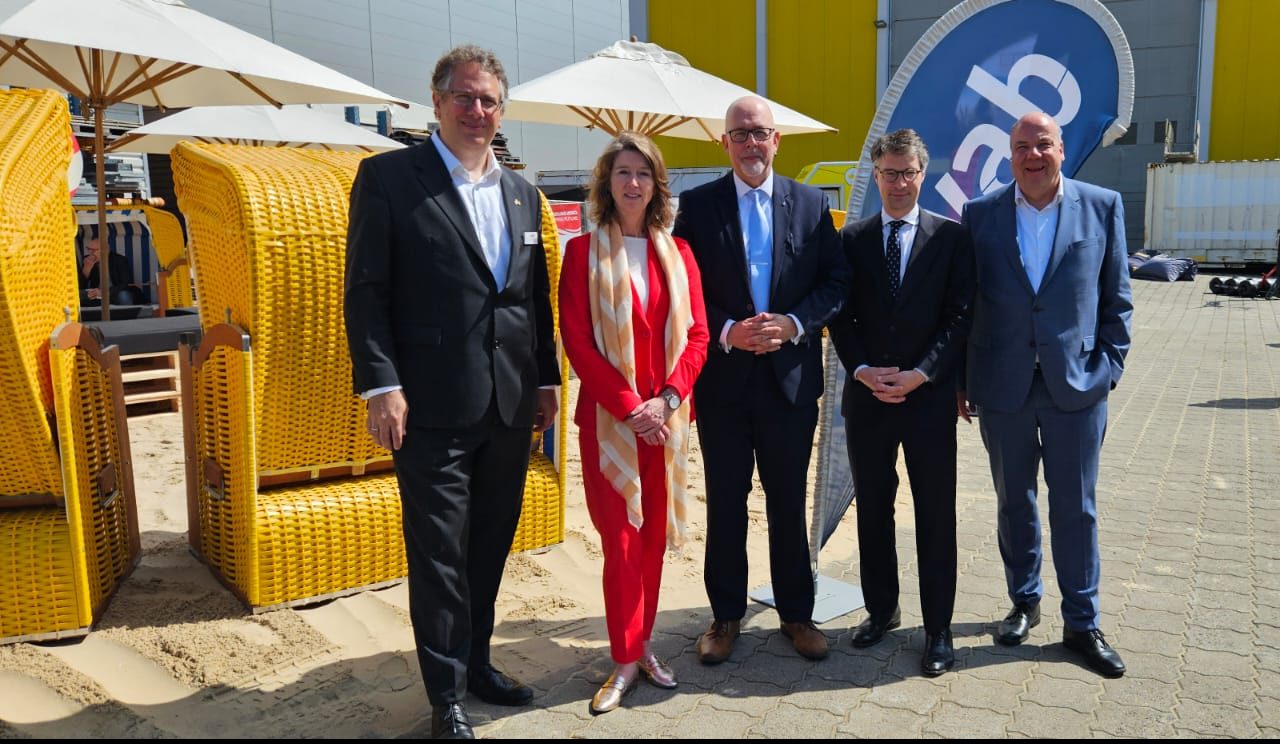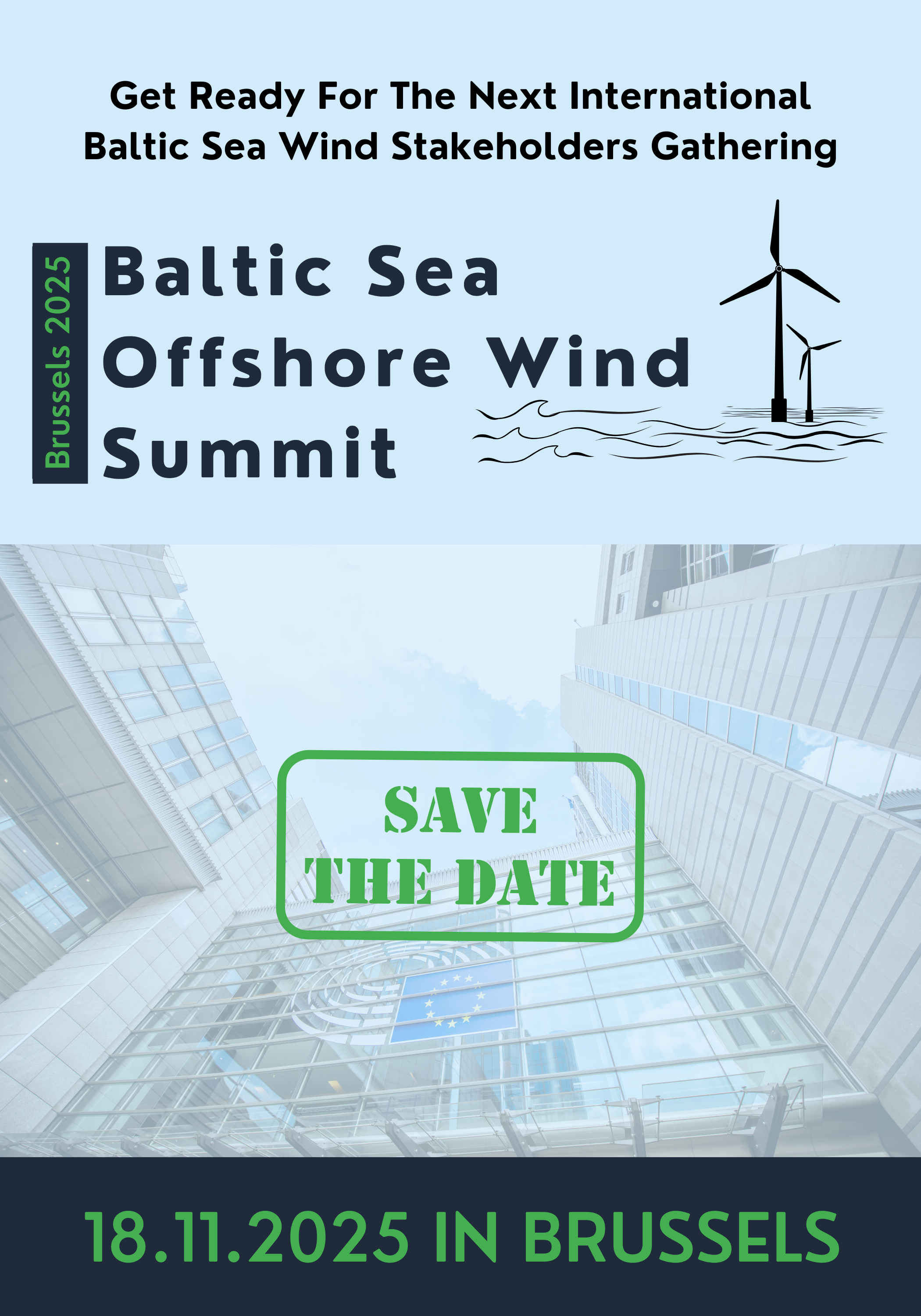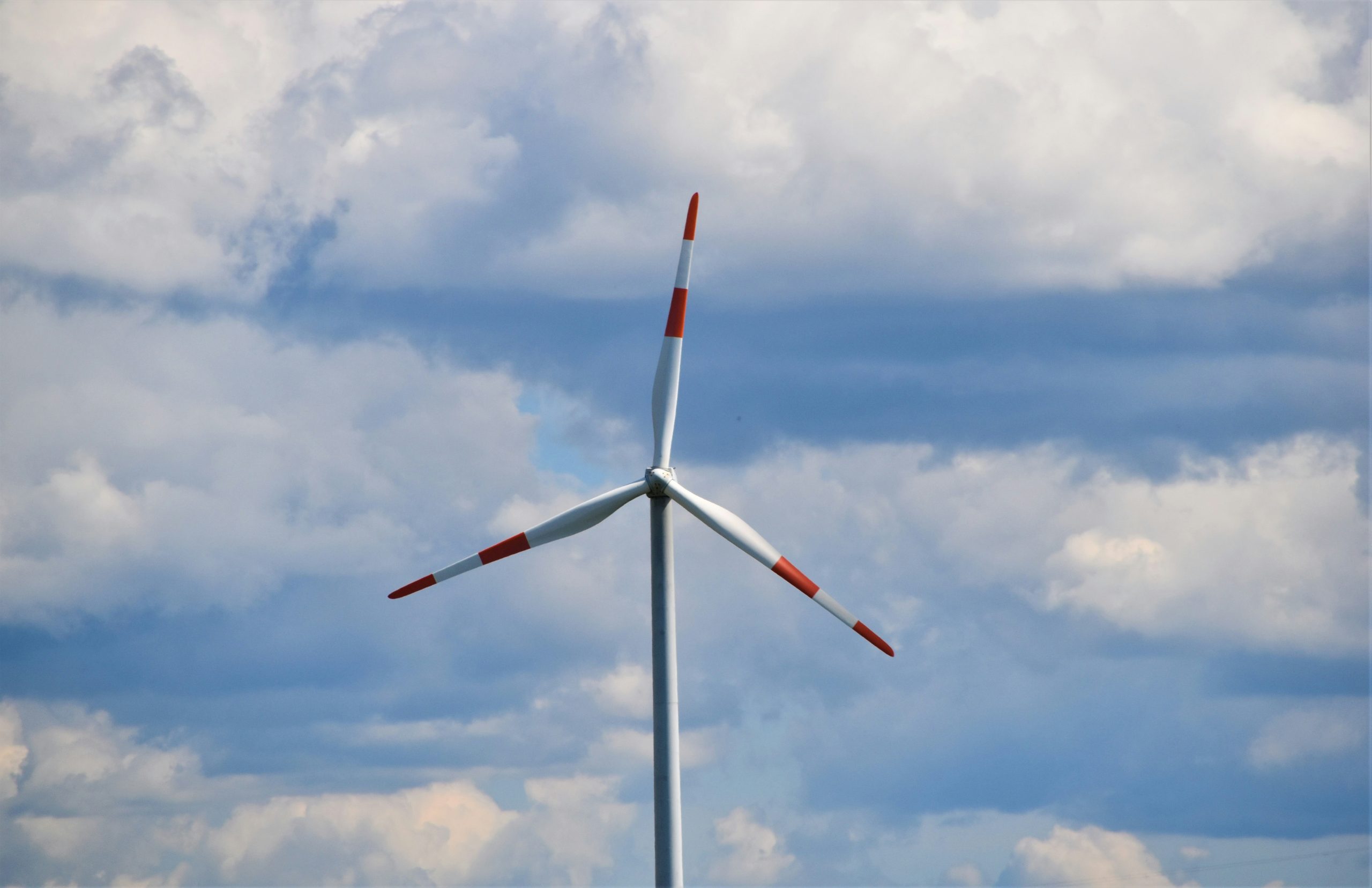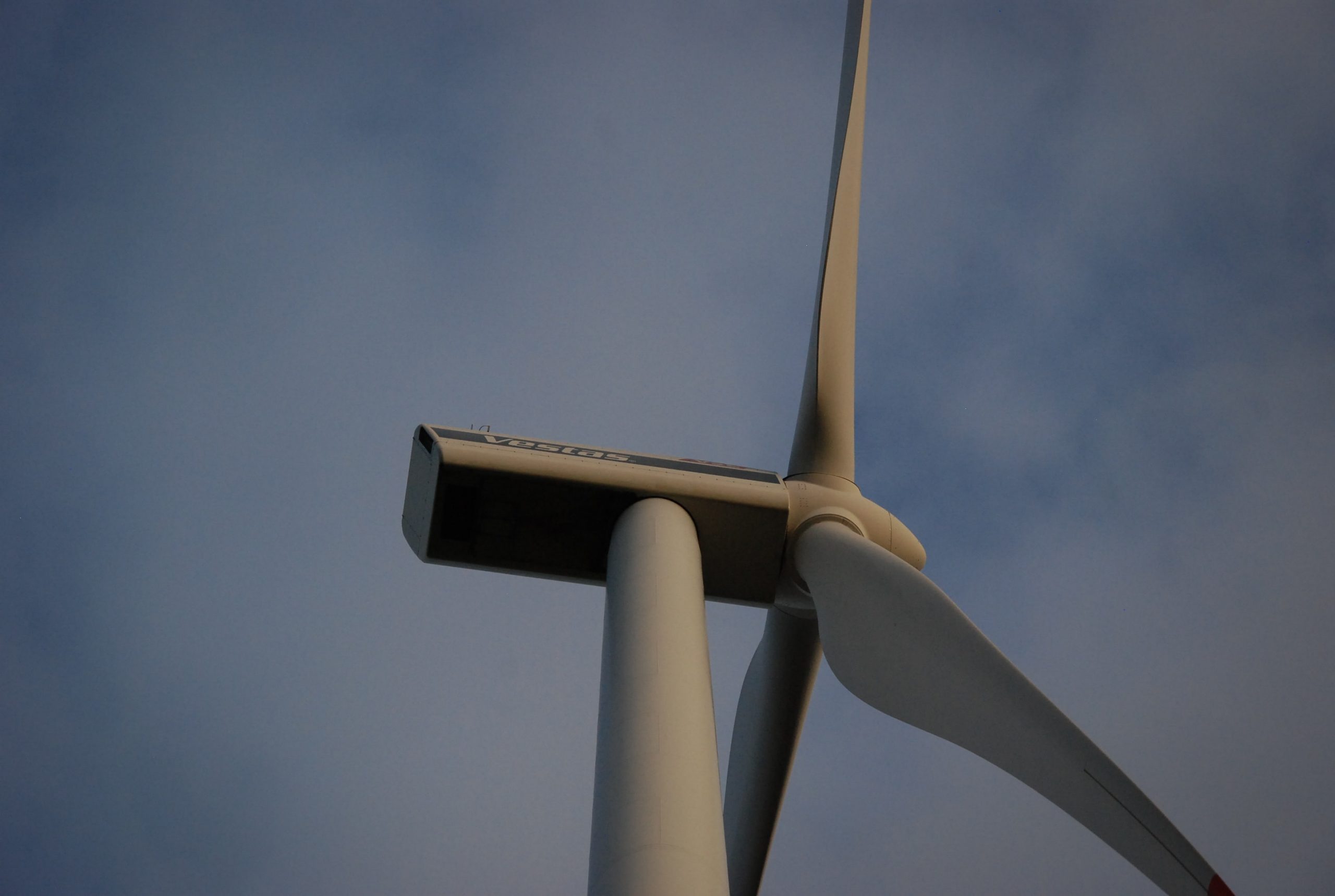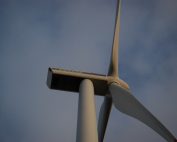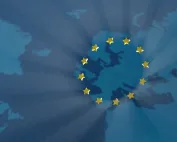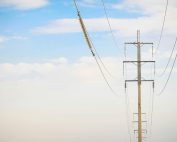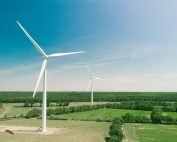Industry needs reliability, long-term political framework conditions, and planning security.
Bremerhaven, June 18, 2025 – The 24th WINDFORCE Conference is taking place in Bremerhaven from June 16 to 18. The motto of this year’s conference is “Securing the European energy and supply chain: now more than ever!” The event is organized by the Wind Energy and Hydrogen Association (WAB e.V.) in Bremerhaven. The industry sees itself at a crossroads of transformation. The conference will bring together over 275 experts from Germany and other European countries who are shaping this transformation. The partner country for this year’s conference is the Netherlands. The program offers two excursions to eight innovative companies and projects in Bremerhaven, Nordenham, and Cuxhaven. Sixty national and international speakers will report on various current topics relevant to the industry.
Guests in Bremerhaven will include the Ambassador of the Kingdom of the Netherlands to Germany, Hester Somsen, the recently appointed Federal Government Coordinator for Maritime Economy and Tourism, Dr. Christoph Ploß, State Secretary to the Senator for Economics, Ports, and Transformation in Bremen, Kai Stührenberg, and the new State Secretary in the Lower Saxony Ministry of Economics, Matthias Wunderling-Weilbier.
The topics to be discussed at the conference are diverse and reflect the breadth and needs of the value chain. These include the role of European standardization for the offshore wind industry, joint spatial planning in the North Sea, innovative solutions in corrosion protection and offshore rescue, strategies for strengthening the value chain in Europe, the connection between CCS storage and offshore wind energy, the role of hydrogen and what we can learn from offshore wind development, the resilience of critical infrastructure, IT security, and the logistics, maintenance, and inspection of offshore installations.
Jens Assheuer, Chairman of the Board, WAB e. V.:
“The motto fits very well with the times and shows that offshore wind is no longer purely a technical issue. It is about geopolitics, industrial policy, security of supply—and, most importantly, climate protection. We are facing major challenges—geopolitical, economic, and infrastructural. And we know that the energy transition requires reliable partnerships, decisive politics, and an industry that delivers. Offshore wind energy has long been more than just a technology—it is the backbone of our energy transition. It not only provides CO₂-free electricity, but it does so consistently and reliably, with high full-load hours and unparalleled availability. This makes it indispensable in an energy system that must be climate-neutral, secure, and economical. Global energy demand is rising – driven by growing populations, increasing prosperity, and the rapid spread of digital technologies. Data centers worldwide already consume almost as much electricity as the whole of Germany in a year – around 500 terawatt hours. And this demand will continue to rise in the coming years – driven by AI, streaming, and the increasing digitization of all areas of life. These technologies will continue to shape our lives – but they need reliable, clean energy. Offshore wind is the logical answer.
Today, we are reaping the rewards of decisions made years ago. But to ensure that the seeds do not dry up, we now need reliability: long-term political framework conditions, planning security, and an industrial policy that specifically strengthens the offshore supply chain – in Germany, in the Netherlands, throughout Europe. Standardization, smarter tendering models, and targeted promotion of innovation are key levers for reducing costs and ensuring the realization of new projects.”
The partner country is the Netherlands. The Netherlands and Germany are leaders in the expansion of offshore wind energy and have ambitious targets for the first hydrogen projects. With the completion of the Hollandse Kust (Noord) wind farm in December 2024, the Netherlands will have an offshore wind power capacity of 4.7 GW, which corresponds to 16% of national electricity consumption. The country has thus exceeded its own targets in terms of time and capacity. This was made possible by a significantly shortened construction period and greater efficiency achieved through the “one-stop shop” principle in the tendering phase. In 2020, the Netherlands set itself the goal of reducing CO2 emissions by 55% by 2030 (compared to 1990 levels). A total capacity of 21 GW of offshore wind energy is to be achieved by 2033.
Hester Somsen, Ambassador of the Kingdom of the Netherlands to Germany
“We are proud that the Dutch diplomatic Network in Germany is partnering up with Holland Home of Wind Energy (HHWE) to represent the Netherlands as partner of the Windforce 2025. Germany and the Netherlands do not only share the North Sea together, but as European countries we are also facing a common challenge: to reduce our dependence on fossil fuels and to safeguard our energy supply. With this regard, the Windforce offers a vital moment of dialogue and reflection, as well as an opportunity to strengthen coordination. Coordinating our activities in the North Sea is crucial to create strong and resilient supply chains, while at the same time tackling the multi-dimensional challenges that we are facing, such as the need to strengthen the competitiveness of our economies and industries, dealing with geopolitical tensions, digital and physical threats, and achieving our climate targets. It is an absolute must that we work together with our neighbours to ensure that we address those issues with confidence. It is therefore encouraging to see the WAB bringing key players of the Northwestern European offshore sector together, here in Bremerhaven.”
Dr. Christoph Ploß’s first appointments in his new role as Federal Government Coordinator for Maritime Economy and Tourism take him to WINDFORCE in Bremerhaven.
Dr. Christoph Ploß, Federal Government Coordinator for Maritime Economy and Tourism.
“The motto of this year’s WINDFORCE conference sums up the key objectives of offshore wind energy: energy security, resilience, and European networking. With successful tenders and cost-efficient expansion, offshore wind can make a significant contribution to European energy security. The topics addressed at WINDFORCE pick up on this and go one step further. The Federal Ministry for Economic Affairs and Energy is also considering and developing offshore wind in all its various dimensions. The focus here is particularly on the affordability of energy. I will take the momentum of WINDFORCE with me and carry it to the government district for the maritime industry.”
The WINDFORCE conference takes place shortly after Global Wind Day (June 15) and marks the 15th anniversary of offshore wind energy in Germany. In 2010, Alpha Ventus, the first offshore wind farm in the German exclusive economic zone (EEZ), went online. There are now 27 wind farms with 1,541 wind turbines in operation in the German EEZ. Twelve converter platforms are in operation or under construction. The total output of the 27 wind farms in the EEZ is currently 8.6 gigawatts – enough to supply more than 8 million households with electricity. By the end of the year, this figure is expected to reach 10.4 gigawatts.
The three-day conference also addresses serious challenges facing the industry: projects are being postponed or canceled altogether – not because of a lack of potential, but because of rising costs and regulatory uncertainty. The price increases for turbines, cables, ships, and skilled workers are not unique to offshore wind, but part of a larger, systemic problem affecting the entire energy transition.
Overall, the industry can draw a positive interim conclusion from the conference and has shown that it is not only innovative, but also resilient and sustainable.
The clear conclusion of the conference: if we are serious about the energy transition and the 1.5-degree target, then we need offshore wind—and lots of it. Offshore wind power not only delivers large amounts of electricity with high full-load time, but it can also be combined excellently with green hydrogen, storage solutions, and industrial applications.
Source: WAB
